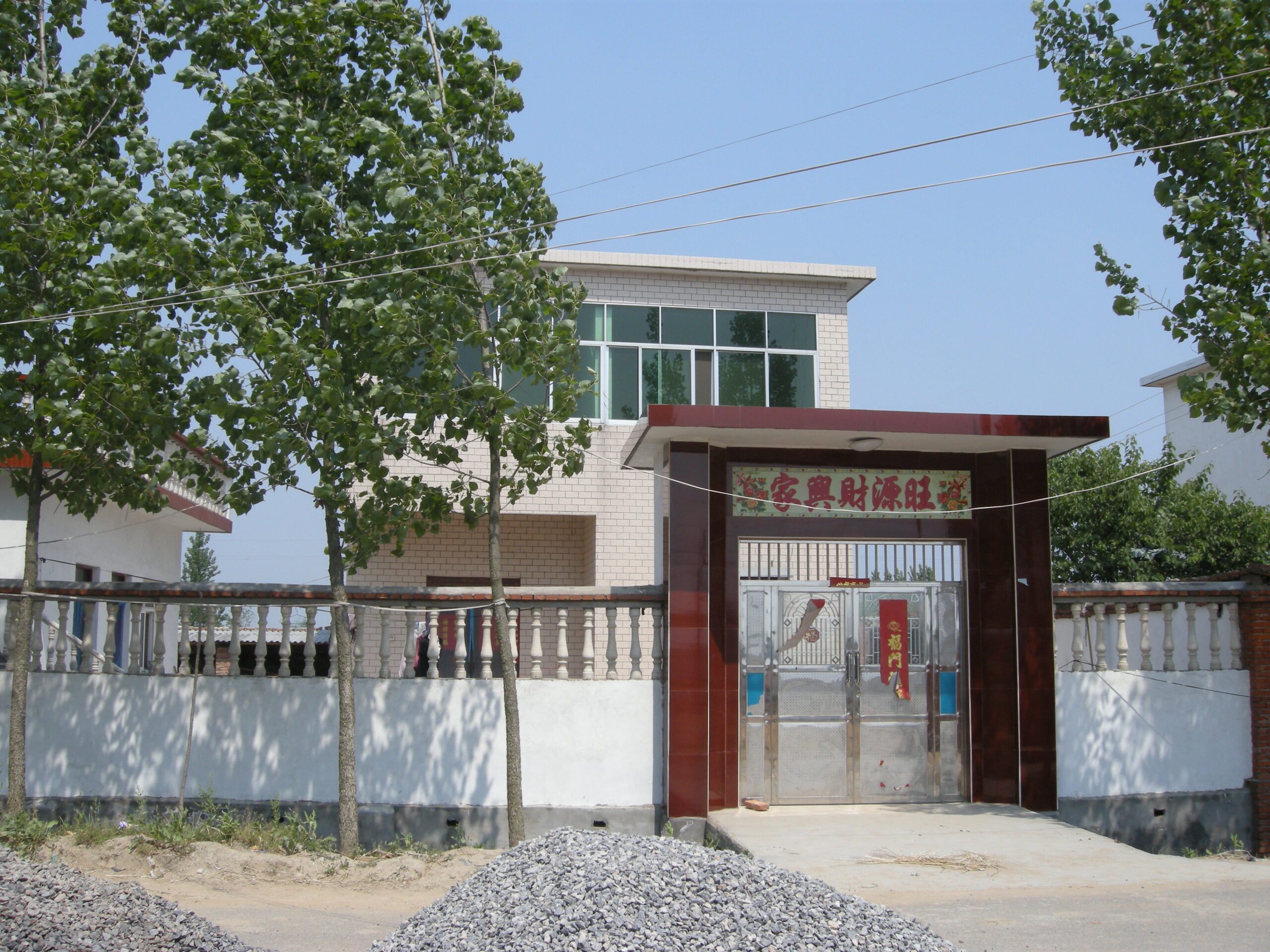What if the story of economic development doesn’t begin with the market, but with the household? And what if property, often assumed to be a static bundle of rights, is better understood as a dynamic institution—adaptive, historically layered, and relational?
These questions sit at the heart of my recent research, which I had the opportunity to present at the Open University’s legal histories conference Land and Property Beyond the Centenary. While my work focuses on property governance and transformation in rural China, its implications stretch far beyond. It challenges dominant liberal narratives about property and development by presenting institutional change as a process of negotiated adaptation shaped by vulnerability and crisis, rather than a linear path towards free markets and individual ownership.
At its core, this work brings into dialogue three theoretical frameworks that are rarely combined: resilience theory, Martha Fineman’s vulnerability jurisprudence, and evolutionary institutional economics inspired by Thorstein Veblen. Together, they offer a rich toolkit for reimagining how development happens—and for whom.
Resilience Beyond Metaphor
‘Resilience’ is everywhere these days—from climate adaptation plans to corporate strategy documents. But in many of these settings, the term functions as a loose metaphor: a call to ‘bounce back’ from crisis, often without interrogating what resilience means, or whose resilience is being protected.
In contrast, resilience theory, which originated in ecological sciences during the 1970s (Holling 1973), initially defined resilience as the capacity of a system to absorb disturbances while maintaining core functions (Walker and Salt 2006). Over time, the concept evolved beyond ecological sciences to address social and institutional dynamics (Humby 2014), culminating in an approach emphasising adaptive governance of socio-ecological systems (SES) (Folke et al. 2005; Duit et al. 2010).
Crucially, contemporary resilience framework is not about stability—it is about transformation under constraint. Applied to economic development, this approach shifts the focus away from fixed development goals (e.g., free markets, individual land ownership) and towards the processes and institutional arrangements that enable adaptation over time.
This is especially important in the context of land, property, and household governance—where liberal models prioritising formal markets and individual ownership often fail to capture the lived realities of economic life in the Global South. In this framing, resilience serves as a critical lens for analysing how property systems evolve under pressure, rather than functioning as a rhetorical term.
The Household as an Adaptive Institution
Nowhere is this more evident than in rural China, where the household has long operated as more than a private, familial unit. Historically, it was a key node in systems of imperial governance, tax collection, and collective responsibility. During the Maoist period, it was scaled up and subsumed into communes through collectivisation. And in the late 1970s and 1980s, it re-emerged as the cornerstone of agricultural reform under the Household Responsibility System (HRS).
Under the HRS, rural land remained collectively owned by the village committee or the collective economic organisation, but rights to use, manage, and benefit from rural land for farming purposes were contracted to individual households. These households—though not legal persons in a Western sense—became the operative economic units, making decisions about production, investment, and surplus. The state retained oversight, but the locus of everyday governance shifted to the household.
This arrangement defies standard models of property. It is neither fully private nor fully communal. It does not rest on individual title, yet it has enabled a massive increase in agricultural productivity, lifted millions out of poverty, and persisted for over four decades. From a resilience perspective, the HRS is a compelling example of institutional adaptation: a locally grounded, historically informed response to systemic crisis.
From Vulnerability to Institutional Support
Yet resilience alone is not enough. As Martha Fineman has powerfully argued, resilience must be understood in relation to vulnerability. Fineman’s (e.g., 2004, 2010, 2013, 2017) vulnerability theory challenges the liberal conception of individuals as fully autonomous, rational, and self-sufficient actors. Instead, she posits human vulnerability as universal and inevitable, experienced differently across the lifecycle but requiring continuous institutional support.
Central to Fineman’s critique is the reconceptualisation of resilience as a socially and institutionally constructed capacity rather than merely an inherent individual trait (Fineman 2013). Acknowledging universal vulnerability demands that resilience be understood as the outcome of supportive institutional structures. Fineman (2010) explicitly calls for a ‘responsive state’ that mitigates structural vulnerability by fostering institutional support. All human beings are vulnerable: to illness, to economic precarity, and to displacement or the loss of social support systems. What varies is how that vulnerability is mediated—through family, community, legal structures, or the state.
Fineman’s theory pushes back against liberal assumptions of autonomy and self-sufficiency. She reminds us that informality can also obscure deep inequalities, especially around gender and care. In China, for example, household-based land contracts have often been issued in the name of male heads, with women’s access mediated by marital status and household registration. This creates hidden dispossessions: when households divide, or when women marry out, their land rights can evaporate. It calls for what Fineman terms the responsive state: one that recognises universal vulnerability and designs systems to mitigate, not reproduce, inequality.
Bringing Fineman into dialogue with resilience theory helps refine our approach. Resilience is not just the ability to adapt—it is the product of institutional arrangements that distribute resources, manage risk, and support those most exposed to harm. Fox O’Mahony and Roark (2022) also note: resilience must not be confused with endurance alone; resilient property must be assessed in relation to how it confronts or reinforces structural injustice. Their work offers an important reminder that without state responsiveness and institutional accountability, resilience risks becoming a justification for inequality.
Veblen, Evolution, and Development as Process
The third strand of this framework—evolutionary institutional economics—adds another layer. In Veblen’s classic formulation, institutions evolve not through design but through selective adaptation: a process shaped by habit, experimentation, and context (Veblen 2007/1899; Hodgson 2012). What persists is not always what is deemed most efficient by liberal standards, but what is most compatible with prevailing ecological and socio-economic conditions.
This evolutionary logic is essential for understanding property and development in non-liberal contexts. It explains, for instance, why Chinese rural households could reassert themselves so effectively in the late 1970s. The HRS cannot be adequately explained solely as a spontaneous market-oriented response. Instead, it emerged from historically entrenched practices of household-based governance. The HRS adapted these historical institutional configurations to contemporary ecological and socio-economic conditions through years of local experimentation.
Veblen also helps us move beyond the binary of tradition vs. modernity. He shows that institutional change is path-dependent, historically situated, and plural. The Chinese case is not a ‘transition’ towards Western models of property—it is a trajectory of its own, shaped by deep histories of governance and human-land relations.
Implications for Development Economics
So, what does all this mean for development economics?
First, it urges rethinking the role of formal institutions and legal formality. As scholars such as Elinor Ostrom (e.g., 1990, 2010) have argued, communities often govern land and resources effectively through informal norms and shared practices. The challenge is not to impose external models, but to understand—and where appropriate, strengthen—the institutional arrangements that already exist.
Second, it calls for integrating vulnerability into development thinking. Much of the field still assumes economic agents are autonomous, rational, and mobile. But real people live in webs of dependency: caring for children, elders, or the sick; tied to households, identities, and places. Economic policy that ignores this—by targeting individuals instead of families, or by displacing informal systems in favour of abstract rights—risks deepening insecurity and inequality.
Third, it suggests taking history seriously. Rather than a fixed problem to be solved, development is an evolving process shaped by ecological pressures, socio-economic realities, and the dynamic interplay of conflict, negotiation, and cooperation across multiple levels of governance. The HRS did not emerge from a blueprint—it emerged from decades of failed collectivisation, suppressed local experiments, and shifting elite consensus. Development economists need to understand these dynamics, not just measure their outcomes.
Finally, and perhaps most importantly, this perspective opens space for a pluralist approach to institutions and property. There is no universal path to development, no one-size-fits-all model of governance. But by attending to how institutions adapt, absorb crisis, and respond to vulnerability, we can begin to build a more grounded, equitable, and resilient understanding of economic change.
Towards a Resilient Development Paradigm
The concept of ‘resilient development’ risks becoming another buzzword unless grounded in rigorous theory and empirical nuance. But used critically, it can become a powerful tool: a way to centre adaptation, institutional experimentation, and vulnerability in how we think about growth, property, and justice.
Rural China’s experience under the HRS offers one case study—but not a template. It reminds us that resilience is not about returning to an imagined past or leaping towards a market ideal. It is about building institutions that can change without collapsing, that can absorb shocks without sacrificing equity, and that can evolve with the communities they serve.
Development, in this sense, is not a destination. It is an ongoing negotiation—between people, institutions, and their environments. And perhaps the household, so often ignored or oversimplified in economic models, is one of the best places to begin.
References
Duit, A. et al. (2010) Governance, Complexity, and Resilience. Global Environmental Change, 20, 363–368.
Fineman, M.A. (2004) The Autonomy Myth: A Theory of Dependency. The New Press.
Fineman, M. A. (2010) The Vulnerable Subject and the Responsive State. Emory Law Journal, 60(2), 251–275.
Fineman, M.A. (2013) Equality, Autonomy, and the Vulnerable Subject in Law and Politics. In M.A. Fineman and A. Grear (eds) Vulnerability: Reflections on a New Ethical Foundation for Law and Politics. Routledge, 13–27.
Fineman, M. A. (2017) Vulnerability and Inevitable Inequality. Oslo Law Review, 4(3), 133–149.
Folke, C. et al. (2005) Adaptive Governance of Social-Ecological Systems. Annual Review of Environment and Resources, 30, 441–73.
Fox O’Mahony, L. and Roark, M.L. (2022) Squatting and the State: Resilient Property in an Age of Crisis. Cambridge University Press.
Hodgson, G.M. (2012) Thorstein Veblen: The Father of Evolutionary and Institutional Economics. In E. S. Reinert and F.L. Viano (eds) Thorstein Veblen: Economics for an Age of Crises. Anthem Press, 83–296.
Holling, C.S. (1973) Resilience and Stability of Ecological Systems. Annual Review of Ecology and Systematics, 4, 1–23.
Humby, T.-L. (2014) Law and Resilience: Mapping the Literature. Seattle Journal of Environmental Law, 4(1), 85–129.
Ostrom, E. (2009) A General Framework for Analyzing Sustainability of Social-Ecological Systems. Science, 325(5935), 419–422.
Ostrom, E. (2010) Beyond Markets and States: Polycentric Governance of Complex Economic Systems. American Economic Review, 100(3), 641–672.
Veblen, T. (2007/1899) The Theory of the Leisure Class: An Economic Study in the Evolution of Institutions. Oxford University Press.
Walker, B. and Salt, D. (2006) Resilience Thinking: Sustaining Ecosystems and People in a Changing World. Island Press.
Ting Xu is Professor of Law at Essex Law School, University of Essex. Her research focuses on comparative property law; Chinese law; law, governance and development; and political economy. @TingXu7
Publisher: Source link











